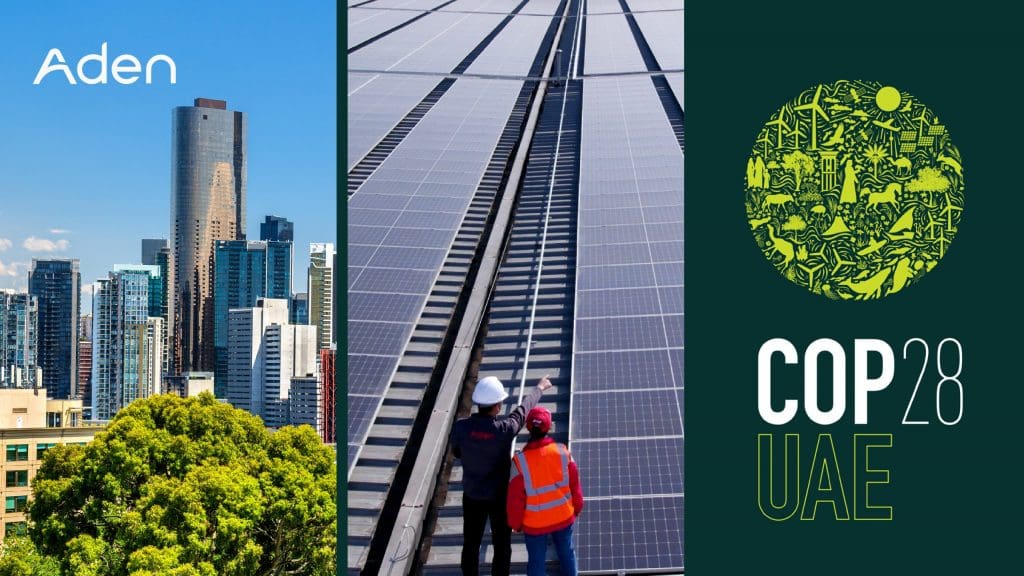In 2023, global awareness of the climate crisis has never been higher. This has been hammered home by a continuous and alarming spike in environmental catastrophes including fires, droughts, floods and climate-related displacement, as well as rapid decline in biodiversity and other metrics of environmental health. In the APAC region, the need for action is being advanced at the governmental, market and consumer levels through major policy commitments such as China’s net-zero 2060 agenda, and the growing centrality of ESG investing and green funds.
With climate action on the agenda like never before, there is a growing focus on the way buildings, their energy-consuming systems and servicing are contributing to the climate crisis. In fact, the built environment has been rated the top global contributor of carbon, responsible for 40% of all C02 emissions when their total lifespan from construction to operation and decommissioning are factored in.
Leading action on climate, then, means getting serious about optimizing the way buildings are managed. This requires a new approach to facilities management, taking a more holistic approach in which all systems and their data are linked for optimization and the built asset is managed from design, through construction and operation. The tool enabling this change will be building and operational data, collected and centralized in a single source of truth. This includes a number of inputs, including:
- BIM modelling from the design, engineering and construction phase of a facility
- Data collected from pre-existing facility systems such as BMS
- Data collected through digitalization of the tools and processes technicians and service staff use on-site
- Automated data collected through sensors, covering areas like asset performance and energy consumption
Understanding the built environment as a contributor to climate change
First, a simple question: what is the built environment? In short, it is a collective term for human made physical structures and the complex infrastructure created to access them, service them, and make them both functional and comfortable for the people who use them. So, the built environment could be a single factory, or a full industrial park; a single office tower or a city district, a hospital or full retirement community, and so forth.
The built environment also must be understood as more than the physical shell of a building – it is also the complex network of utilities, assets and systems which enable it to function including large networks for energy consumption and circulation of heat, gas, water and air. As renewable energies technologies advance, the built environment increasingly integrates building-level hubs of energy generation, storage and distribution (commonly known as a micro-grid)
Finally, it must be remembered that the built environment has an extremely long lifespan, encompassing design, construction and operations, with an commercial properties averaging 70 years of functional use in many countries. As such, maintaining optimal efficiency and performance is critical to the reduction of carbon emissions
By the numbers: how buildings are impacting the environment
While not a comprehensive list, the following ten statistics give some indication of how much is at stake I the proper servicing and optimization of the built environment:
- The embodied carbon emissions from the construction of new buildings are equivalent to approximately 11% of global greenhouse gas emissions. (World Green Building Council)
- The total value of waste generated by the construction and demolition industry globally is estimated to be between $410 billion and $460 billion per year. (IFMA)
- The energy consumption of buildings globally is projected to grow by 50% from 2018 to 2050, with CO2 emissions from buildings increasing to 5.3 GtCO2 by 2050. (McKinsey)
- The operational energy used by buildings is responsible for approximately 28% of global energy-related CO2 emissions. (Global Alliance for Buildings and Construction)
- Green building retrofits can reduce building energy consumption by up to 50%, and retrofits of existing buildings could reduce global greenhouse gas emissions by up to 1.5 GtCO2 per year. (IEA)
- The use of smart building technologies such as automated lighting and heating systems could reduce global building energy consumption by up to 30%, saving up to $1.2 trillion in energy costs by 2040. (World Economic Forum)
The new glossary of sustainable frontier: net-zero, climate resilient and climate regenerative
As the environmental crisis drives major change in the way buildings are managed, new concepts and ambitions for buildings are emerging. These will be key components in the ongoing decarbonization of the built environment, and achieved through a comprehensive reworking of BIM-based design and construction; new materials; digital twin technologies for advanced simulation, space optimization and data centralization; asset-centric O&M; micro-grid; and more.
Net-zero facilities
Net zero facilities are buildings that produce as much energy as they consume, resulting in a net-zero carbon footprint. These buildings are designed to be energy-efficient and use renewable energy sources such as solar, wind, and geothermal energy to generate their own electricity and heat. Net zero facilities can also utilize energy storage systems to store excess energy for use during times when renewable energy generation is low. By generating their energy, net zero facilities can help to reduce the carbon footprint of the built environment and help mitigate climate change. These facilities are becoming increasingly popular as organizations strive to achieve sustainability goals and reduce their environmental impact.

Climate resilient facilities
A climate resilient building is a structure that is designed to withstand and adapt to the impacts of climate change. These buildings are constructed with materials and systems that can withstand extreme weather events such as floods, hurricanes, and heatwaves. Climate resilient buildings also incorporate features such as energy-efficient designs, natural ventilation, and green roofs that can help to reduce the building’s carbon footprint and improve its overall sustainability. In addition, they can also provide a safe haven during natural disasters and help to minimize the disruption caused by climate-related events. As the impacts of climate change become more severe, the need for climate resilient buildings is growing, and they are becoming an increasingly important part of sustainable development.
Climate regenerative facilities
Climate regenerative facilities are buildings that are designed to not only have a minimal environmental impact but also actively contribute to improving the health of the planet. These buildings are constructed using sustainable materials and are designed to be energy-efficient and carbon-neutral, with a focus on reducing greenhouse gas emissions. Climate regenerative facilities also incorporate features that help to support the local ecosystem, such as green roofs, rainwater harvesting, and natural landscaping. These facilities can help to improve air and water quality, reduce urban heat islands, and promote biodiversity. By using regenerative design principles, climate regenerative facilities can help to create a built environment that actively supports the health of the planet and promotes long-term sustainability.
From commitment to action
While the battle is far from won, all of the opportunities and breakthroughs listed above are viable, actionable and achievable today. Aden Group has already assisted clients in achieving substantial decarbonization, performance and efficiency gains, as well as the construction and implementation of micro-grids and net-zero facilities in Asia. Powered by its digital platform Akila, and its portfolio of industry specialist teams and businesses, Aden Group is able to deliver facility optimizations that enable better ESG performance, environmental compliance and wellness outcomes for building users.
If you are interested in learning how to reduce your facility or portfolio’s carbon and environmental impact, don’t hesitate to contact us for a meeting and assessment of your needs.









